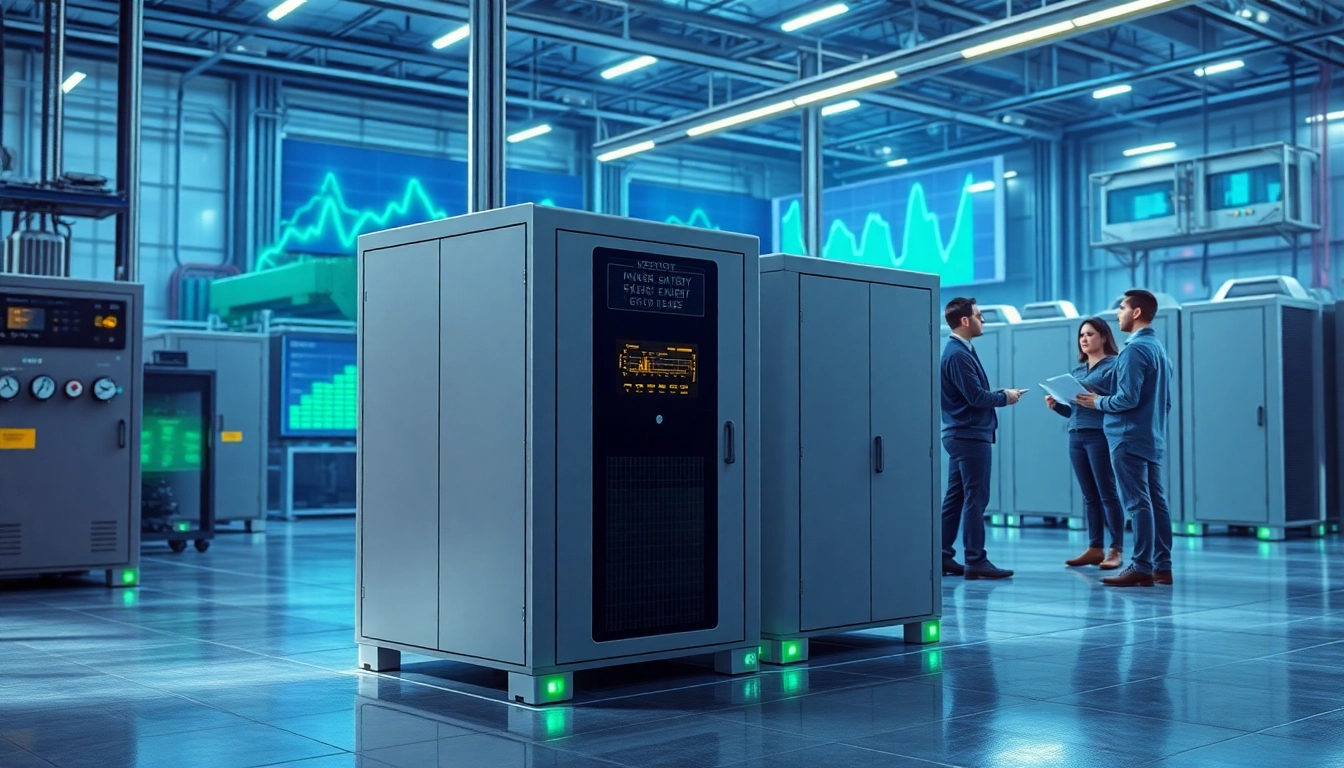
As the global energy landscape shifts towards cleaner, renewable sources, one innovation has rapidly emerged as a keystone for the future: the battery energy storage system. From enabling grid reliability to reducing dependence on fossil fuels, battery storage systems are revolutionizing how we generate, distribute, and consume electricity. In an age where sustainability is no longer optional, the battery energy storage system stands at the forefront of technological and environmental transformation.
Understanding the Battery Energy Storage System
A battery energy storage system (BESS) is a technology that stores electrical energy for use at a later time. At its core, the system captures electricity—typically from renewable sources like solar or wind—and stores it in high-capacity batteries. This stored energy can then be released to the grid when demand spikes or when generation drops, offering a stable and reliable energy supply.
What makes this system revolutionary is its ability to decouple energy generation from consumption. In traditional power grids, electricity must be used as it’s generated. BESS changes that by adding flexibility, allowing excess power to be stored and deployed on demand.
How Battery Energy Storage Systems Work
Battery energy storage systems consist of three main components:
- Battery Cells: These are the core storage units, often made of lithium-ion or other advanced chemistries.
- Battery Management System (BMS): This ensures safe and efficient charging and discharging, monitors performance, and prevents malfunctions.
- Power Conversion System (PCS): Converts DC power from batteries to AC power for the grid and vice versa.
Together, these components allow the system to absorb energy when it’s abundant and discharge it when needed—playing a crucial role in balancing energy supply and demand.
Advantages of Battery Energy Storage Systems
1. Enhanced Grid Reliability
One of the most critical benefits of a battery energy storage system is its role in grid stability. By smoothing out supply fluctuations, it prevents blackouts and power outages. This is particularly crucial as more intermittent renewable sources are integrated into national grids.
2. Energy Cost Savings
Businesses and utility companies use BESS to offset high electricity rates during peak demand hours. Storing energy during off-peak times and using it during peak demand leads to substantial cost savings.
3. Renewable Energy Integration
Solar and wind power are not always available when demand is highest. A battery energy storage system stores surplus energy generated during sunny or windy periods and makes it available when needed, enabling seamless integration of renewables.
4. Reduced Carbon Emissions
By minimizing the need for fossil fuel-based backup generators, BESS significantly reduces greenhouse gas emissions. This positions it as a central player in global decarbonization efforts.
5. Energy Independence
For remote areas and off-grid applications, a battery energy storage system offers self-reliant power solutions. Combined with solar panels or wind turbines, it eliminates dependency on central grids.
Use Cases Across Sectors
Utility-Scale Energy Storage
Large-scale battery energy storage systems are deployed by utility companies to stabilize the grid, reduce transmission losses, and defer expensive infrastructure upgrades.
Commercial and Industrial Applications
Manufacturing plants, data centers, and commercial complexes use BESS for peak shaving and backup power, ensuring continuity and lowering operational costs.
Residential Energy Storage
Homeowners are increasingly adopting residential BESS paired with rooftop solar. This empowers them to become prosumers—both producing and consuming energy—while ensuring security during outages.
EV Charging Infrastructure
Battery energy storage systems also play a role in electric vehicle (EV) charging networks. They reduce grid load during peak hours and ensure fast, reliable charging without overburdening existing infrastructure.
The Market Growth of Battery Energy Storage Systems
According to industry reports, the global battery energy storage system market is expected to grow from $10 billion in 2022 to over $30 billion by 2030. Factors driving this growth include rapid renewable adoption, declining battery costs, and supportive government policies.
Countries like the United States, China, Germany, and Australia are leading the charge, deploying massive battery projects that showcase the technology’s transformative potential.
Challenges and Future Outlook
Despite its advantages, the battery energy storage system faces a few challenges:
- High Initial Costs: While battery prices are falling, the upfront investment remains significant for many applications.
- Resource Availability: The need for materials like lithium, cobalt, and nickel can strain supply chains.
- End-of-Life Management: Disposal and recycling of batteries need to be addressed to ensure environmental sustainability.
However, ongoing R&D efforts are focused on developing alternative chemistries such as sodium-ion and solid-state batteries. These innovations promise higher efficiency, longer life cycles, and lower environmental impact.
Policies and Incentives Fueling the Revolution
Governments worldwide are recognizing the potential of BESS and are rolling out incentives to accelerate adoption. Subsidies, tax credits, and feed-in tariffs are being introduced to encourage residential and commercial installations.
In the United States, the Inflation Reduction Act includes significant provisions for clean energy storage. Similarly, the European Union’s Green Deal supports massive investment in battery storage infrastructure across member states.
The Role of Eszoneo in Driving Innovation
As a forward-thinking platform, Eszoneo champions the integration of clean technologies like battery energy storage systems into modern infrastructure. By providing insights, news, and curated solutions, Eszoneo empowers consumers and businesses to make informed decisions toward a sustainable energy future.
Eszoneo plays a pivotal role in educating the public about the benefits and practical applications of energy storage, driving market momentum and environmental impact.
Conclusion: The Time for Battery Energy Storage is Now
The battery energy storage system is no longer a futuristic concept—it’s here and making a tangible impact. As the world shifts to renewable power, BESS ensures stability, flexibility, and resilience across the energy spectrum. From homes and factories to entire cities, the ability to store and release energy on demand is changing the way we think about power.
For individuals and businesses looking to future-proof their energy strategy, embracing a battery energy storage system is not just a smart move—it’s a necessary one. Explore how Eszoneo can help you transition into this new era of clean, reliable, and intelligent energy. Find more in-depth guides and updates on our homepage.
FAQs About Battery Energy Storage Systems
1. What is the lifespan of a battery energy storage system?
Most lithium-ion battery energy storage systems have a lifespan of 10 to 15 years, depending on usage patterns and environmental conditions. Proper maintenance and advanced battery management systems can further extend their longevity.
2. Can a battery energy storage system power a home during a blackout?
Yes, a properly sized residential BESS can provide backup power during outages. When combined with solar panels, it offers complete energy independence and uninterrupted power supply.
3. Are battery energy storage systems safe?
Modern BESS designs incorporate advanced safety features, including thermal management, overcharge protection, and fire suppression systems. Rigorous industry standards ensure high levels of operational safety.





